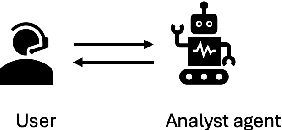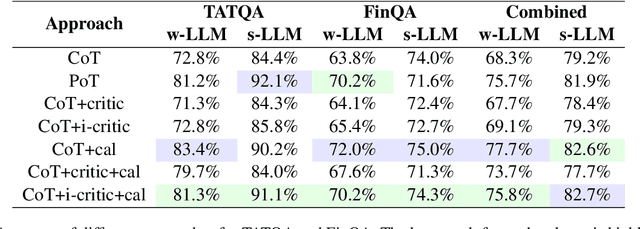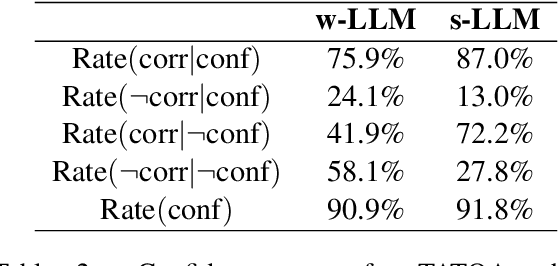Liang Zhang
IEFS-GMB: Gradient Memory Bank-Guided Feature Selection Based on Information Entropy for EEG Classification of Neurological Disorders
Sep 18, 2025Abstract:Deep learning-based EEG classification is crucial for the automated detection of neurological disorders, improving diagnostic accuracy and enabling early intervention. However, the low signal-to-noise ratio of EEG signals limits model performance, making feature selection (FS) vital for optimizing representations learned by neural network encoders. Existing FS methods are seldom designed specifically for EEG diagnosis; many are architecture-dependent and lack interpretability, limiting their applicability. Moreover, most rely on single-iteration data, resulting in limited robustness to variability. To address these issues, we propose IEFS-GMB, an Information Entropy-based Feature Selection method guided by a Gradient Memory Bank. This approach constructs a dynamic memory bank storing historical gradients, computes feature importance via information entropy, and applies entropy-based weighting to select informative EEG features. Experiments on four public neurological disease datasets show that encoders enhanced with IEFS-GMB achieve accuracy improvements of 0.64% to 6.45% over baseline models. The method also outperforms four competing FS techniques and improves model interpretability, supporting its practical use in clinical settings.
LLM-OREF: An Open Relation Extraction Framework Based on Large Language Models
Sep 18, 2025Abstract:The goal of open relation extraction (OpenRE) is to develop an RE model that can generalize to new relations not encountered during training. Existing studies primarily formulate OpenRE as a clustering task. They first cluster all test instances based on the similarity between the instances, and then manually assign a new relation to each cluster. However, their reliance on human annotation limits their practicality. In this paper, we propose an OpenRE framework based on large language models (LLMs), which directly predicts new relations for test instances by leveraging their strong language understanding and generation abilities, without human intervention. Specifically, our framework consists of two core components: (1) a relation discoverer (RD), designed to predict new relations for test instances based on \textit{demonstrations} formed by training instances with known relations; and (2) a relation predictor (RP), used to select the most likely relation for a test instance from $n$ candidate relations, guided by \textit{demonstrations} composed of their instances. To enhance the ability of our framework to predict new relations, we design a self-correcting inference strategy composed of three stages: relation discovery, relation denoising, and relation prediction. In the first stage, we use RD to preliminarily predict new relations for all test instances. Next, we apply RP to select some high-reliability test instances for each new relation from the prediction results of RD through a cross-validation method. During the third stage, we employ RP to re-predict the relations of all test instances based on the demonstrations constructed from these reliable test instances. Extensive experiments on three OpenRE datasets demonstrate the effectiveness of our framework. We release our code at https://github.com/XMUDeepLIT/LLM-OREF.git.
STM3: Mixture of Multiscale Mamba for Long-Term Spatio-Temporal Time-Series Prediction
Aug 17, 2025Abstract:Recently, spatio-temporal time-series prediction has developed rapidly, yet existing deep learning methods struggle with learning complex long-term spatio-temporal dependencies efficiently. The long-term spatio-temporal dependency learning brings two new challenges: 1) The long-term temporal sequence includes multiscale information naturally which is hard to extract efficiently; 2) The multiscale temporal information from different nodes is highly correlated and hard to model. To address these challenges, we propose an efficient \textit{\textbf{S}patio-\textbf{T}emporal \textbf{M}ultiscale \textbf{M}amba} (STM2) that includes a multiscale Mamba architecture to capture the multiscale information efficiently and simultaneously, and an adaptive graph causal convolution network to learn the complex multiscale spatio-temporal dependency. STM2 includes hierarchical information aggregation for different-scale information that guarantees their distinguishability. To capture diverse temporal dynamics across all spatial nodes more efficiently, we further propose an enhanced version termed \textit{\textbf{S}patio-\textbf{T}emporal \textbf{M}ixture of \textbf{M}ultiscale \textbf{M}amba} (STM3) that employs a special Mixture-of-Experts architecture, including a more stable routing strategy and a causal contrastive learning strategy to enhance the scale distinguishability. We prove that STM3 has much better routing smoothness and guarantees the pattern disentanglement for each expert successfully. Extensive experiments on real-world benchmarks demonstrate STM2/STM3's superior performance, achieving state-of-the-art results in long-term spatio-temporal time-series prediction.
Mathematical Computation and Reasoning Errors by Large Language Models
Aug 14, 2025Abstract:Large Language Models (LLMs) are increasingly utilized in AI-driven educational instruction and assessment, particularly within mathematics education. The capability of LLMs to generate accurate answers and detailed solutions for math problem-solving tasks is foundational for ensuring reliable and precise feedback and assessment in math education practices. Our study focuses on evaluating the accuracy of four LLMs (OpenAI GPT-4o and o1, DeepSeek-V3 and DeepSeek-R1) solving three categories of math tasks, including arithmetic, algebra, and number theory, and identifies step-level reasoning errors within their solutions. Instead of relying on standard benchmarks, we intentionally build math tasks (via item models) that are challenging for LLMs and prone to errors. The accuracy of final answers and the presence of errors in individual solution steps were systematically analyzed and coded. Both single-agent and dual-agent configurations were tested. It is observed that the reasoning-enhanced OpenAI o1 model consistently achieved higher or nearly perfect accuracy across all three math task categories. Analysis of errors revealed that procedural slips were the most frequent and significantly impacted overall performance, while conceptual misunderstandings were less frequent. Deploying dual-agent configurations substantially improved overall performance. These findings offer actionable insights into enhancing LLM performance and underscore effective strategies for integrating LLMs into mathematics education, thereby advancing AI-driven instructional practices and assessment precision.
MCPToolBench++: A Large Scale AI Agent Model Context Protocol MCP Tool Use Benchmark
Aug 11, 2025



Abstract:LLMs' capabilities are enhanced by using function calls to integrate various data sources or API results into the context window. Typical tools include search, web crawlers, maps, financial data, file systems, and browser usage, etc. Integrating these data sources or functions requires a standardized method. The Model Context Protocol (MCP) provides a standardized way to supply context to LLMs. However, the evaluation of LLMs and AI Agents' MCP tool use abilities suffer from several issues. First, there's a lack of comprehensive datasets or benchmarks to evaluate various MCP tools. Second, the diverse formats of response from MCP tool call execution further increase the difficulty of evaluation. Additionally, unlike existing tool-use benchmarks with high success rates in functions like programming and math functions, the success rate of real-world MCP tool is not guaranteed and varies across different MCP servers. Furthermore, the LLMs' context window also limits the number of available tools that can be called in a single run, because the textual descriptions of tool and the parameters have long token length for an LLM to process all at once. To help address the challenges of evaluating LLMs' performance on calling MCP tools, we propose MCPToolBench++, a large-scale, multi-domain AI Agent tool use benchmark. As of July 2025, this benchmark is build upon marketplace of over 4k MCP servers from more than 40 categories, collected from the MCP marketplaces and GitHub communities. The datasets consist of both single-step and multi-step tool calls across different categories. We evaluated SOTA LLMs with agentic abilities on this benchmark and reported the results.
TOP: Time Optimization Policy for Stable and Accurate Standing Manipulation with Humanoid Robots
Aug 01, 2025Abstract:Humanoid robots have the potential capability to perform a diverse range of manipulation tasks, but this is based on a robust and precise standing controller. Existing methods are either ill-suited to precisely control high-dimensional upper-body joints, or difficult to ensure both robustness and accuracy, especially when upper-body motions are fast. This paper proposes a novel time optimization policy (TOP), to train a standing manipulation control model that ensures balance, precision, and time efficiency simultaneously, with the idea of adjusting the time trajectory of upper-body motions but not only strengthening the disturbance resistance of the lower-body. Our approach consists of three parts. Firstly, we utilize motion prior to represent upper-body motions to enhance the coordination ability between the upper and lower-body by training a variational autoencoder (VAE). Then we decouple the whole-body control into an upper-body PD controller for precision and a lower-body RL controller to enhance robust stability. Finally, we train TOP method in conjunction with the decoupled controller and VAE to reduce the balance burden resulting from fast upper-body motions that would destabilize the robot and exceed the capabilities of the lower-body RL policy. The effectiveness of the proposed approach is evaluated via both simulation and real world experiments, which demonstrate the superiority on standing manipulation tasks stably and accurately. The project page can be found at https://anonymous.4open.science/w/top-258F/.
POLYCHARTQA: Benchmarking Large Vision-Language Models with Multilingual Chart Question Answering
Jul 16, 2025Abstract:Charts are a universally adopted medium for interpreting and communicating data. However, existing chart understanding benchmarks are predominantly English-centric, limiting their accessibility and applicability to global audiences. In this paper, we present PolyChartQA, the first large-scale multilingual chart question answering benchmark covering 22,606 charts and 26,151 question-answering pairs across 10 diverse languages. PolyChartQA is built using a decoupled pipeline that separates chart data from rendering code, allowing multilingual charts to be flexibly generated by simply translating the data and reusing the code. We leverage state-of-the-art LLM-based translation and enforce rigorous quality control in the pipeline to ensure the linguistic and semantic consistency of the generated multilingual charts. PolyChartQA facilitates systematic evaluation of multilingual chart understanding. Experiments on both open- and closed-source large vision-language models reveal a significant performance gap between English and other languages, especially low-resource ones with non-Latin scripts. This benchmark lays a foundation for advancing globally inclusive vision-language models.
Improved LLM Agents for Financial Document Question Answering
Jun 10, 2025



Abstract:Large language models (LLMs) have shown impressive capabilities on numerous natural language processing tasks. However, LLMs still struggle with numerical question answering for financial documents that include tabular and textual data. Recent works have showed the effectiveness of critic agents (i.e., self-correction) for this task given oracle labels. Building upon this framework, this paper examines the effectiveness of the traditional critic agent when oracle labels are not available, and show, through experiments, that this critic agent's performance deteriorates in this scenario. With this in mind, we present an improved critic agent, along with the calculator agent which outperforms the previous state-of-the-art approach (program-of-thought) and is safer. Furthermore, we investigate how our agents interact with each other, and how this interaction affects their performance.
Zeroth-Order Optimization Finds Flat Minima
Jun 05, 2025Abstract:Zeroth-order methods are extensively used in machine learning applications where gradients are infeasible or expensive to compute, such as black-box attacks, reinforcement learning, and language model fine-tuning. Existing optimization theory focuses on convergence to an arbitrary stationary point, but less is known on the implicit regularization that provides a fine-grained characterization on which particular solutions are finally reached. We show that zeroth-order optimization with the standard two-point estimator favors solutions with small trace of Hessian, which is widely used in previous work to distinguish between sharp and flat minima. We further provide convergence rates of zeroth-order optimization to approximate flat minima for convex and sufficiently smooth functions, where flat minima are defined as the minimizers that achieve the smallest trace of Hessian among all optimal solutions. Experiments on binary classification tasks with convex losses and language model fine-tuning support our theoretical findings.
How Is LLM Reasoning Distracted by Irrelevant Context? An Analysis Using a Controlled Benchmark
May 24, 2025Abstract:We introduce Grade School Math with Distracting Context (GSM-DC), a synthetic benchmark to evaluate Large Language Models' (LLMs) reasoning robustness against systematically controlled irrelevant context (IC). GSM-DC constructs symbolic reasoning graphs with precise distractor injections, enabling rigorous, reproducible evaluation. Our experiments demonstrate that LLMs are significantly sensitive to IC, affecting both reasoning path selection and arithmetic accuracy. Additionally, training models with strong distractors improves performance in both in-distribution and out-of-distribution scenarios. We further propose a stepwise tree search guided by a process reward model, which notably enhances robustness in out-of-distribution conditions.
 Add to Chrome
Add to Chrome Add to Firefox
Add to Firefox Add to Edge
Add to Edge